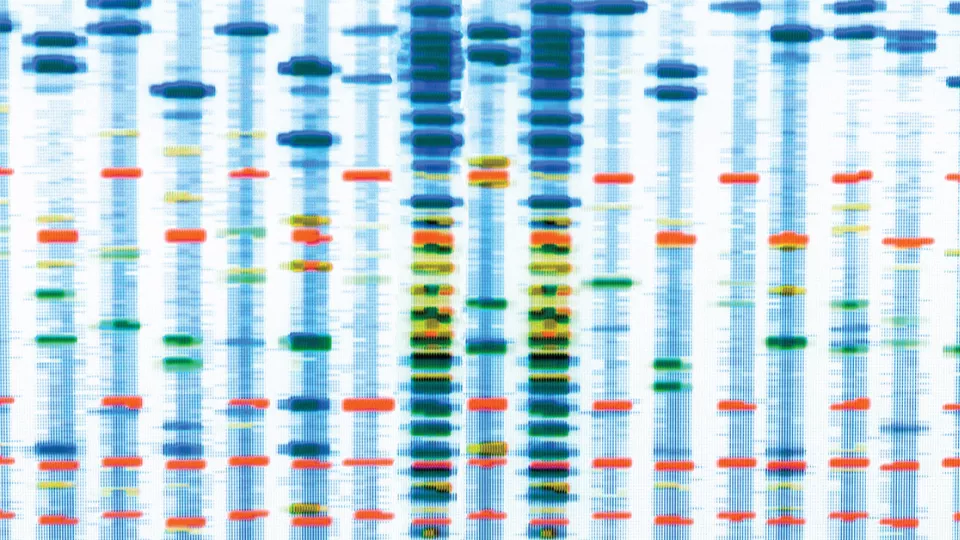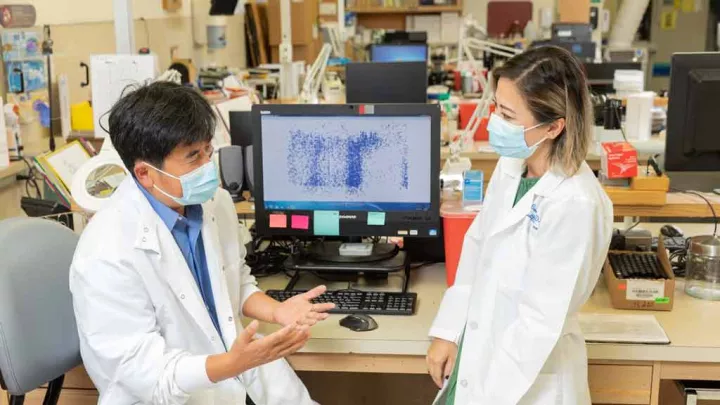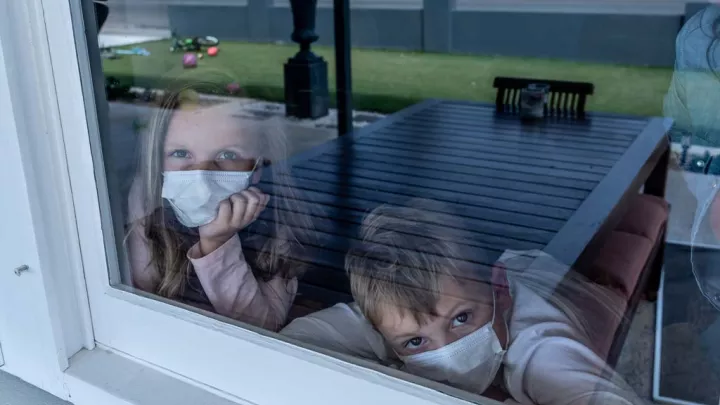
GENETIC SEQUENCING
Research is rarely the work of a single individual. It is a complex and dynamic process that requires interacting within the scientific community and building upon the earlier work of others. Much of the testing and tracing performed during the pandemic has relied upon genetic sequencing, the origins of which date back more than half a century.
In the 1950s, scientists knew that deoxyribonucleic acid, or DNA, was the molecule that stored the genetic information of most organisms, including humans. After a period of intense and competitive research to learn more about it, discovery of the structure of DNA was credited to James D. Watson and Francis Crick, based on the crucial work of Rosalind Franklin in Cambridge, England, in 1953.
DNA and single-stranded ribonucleic acid, or RNA, are made of building blocks, called nucleotides, that create the genetic code for each organism. This information can also be “decoded” through genetic sequencing—a process that has revolutionized medicine by allowing scientists to uncover mutations, or changes in the genetic code, that can cause diseases ranging from cancer to heart disease to autism.
The first sequencing method—capable of sequencing both DNA and RNA—was developed in 1977 by Frederick Sanger and his colleagues and is still in use today. More widely employed is the next generation sequencing (NGS) method, developed in 2007, which can run a large volume of samples at high speed. This technology has provided the foundation for personalized medicine.
Over the past year and a half, viral genetic sequencing has been crucial in the battle against COVID-19 and the virus that causes it, SARS-CoV-2. NGS sequencing enabled scientists to develop tests for COVID-19 and vaccines. It continues to be essential for monitoring mutations used to track the spread of the virus.


